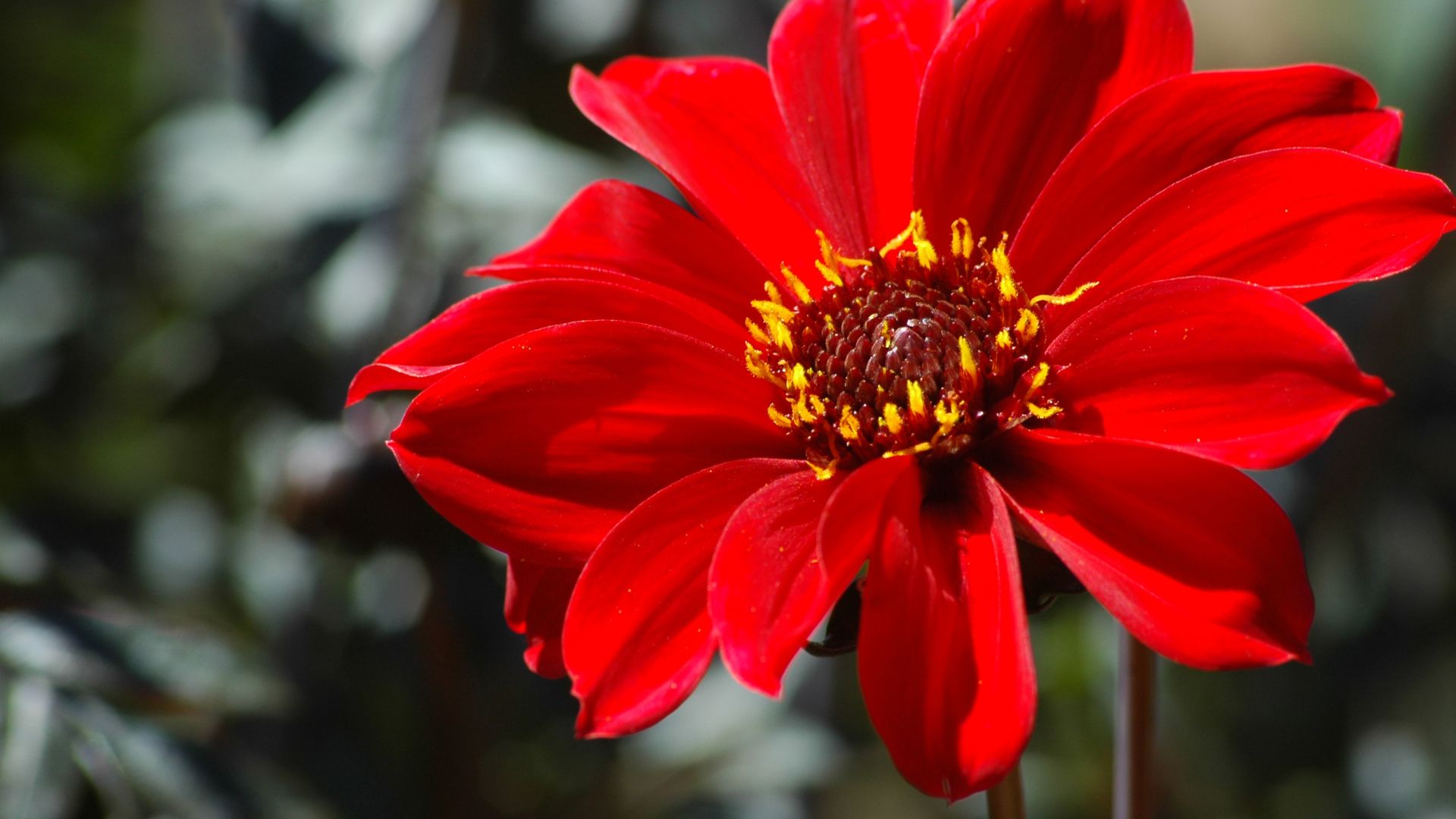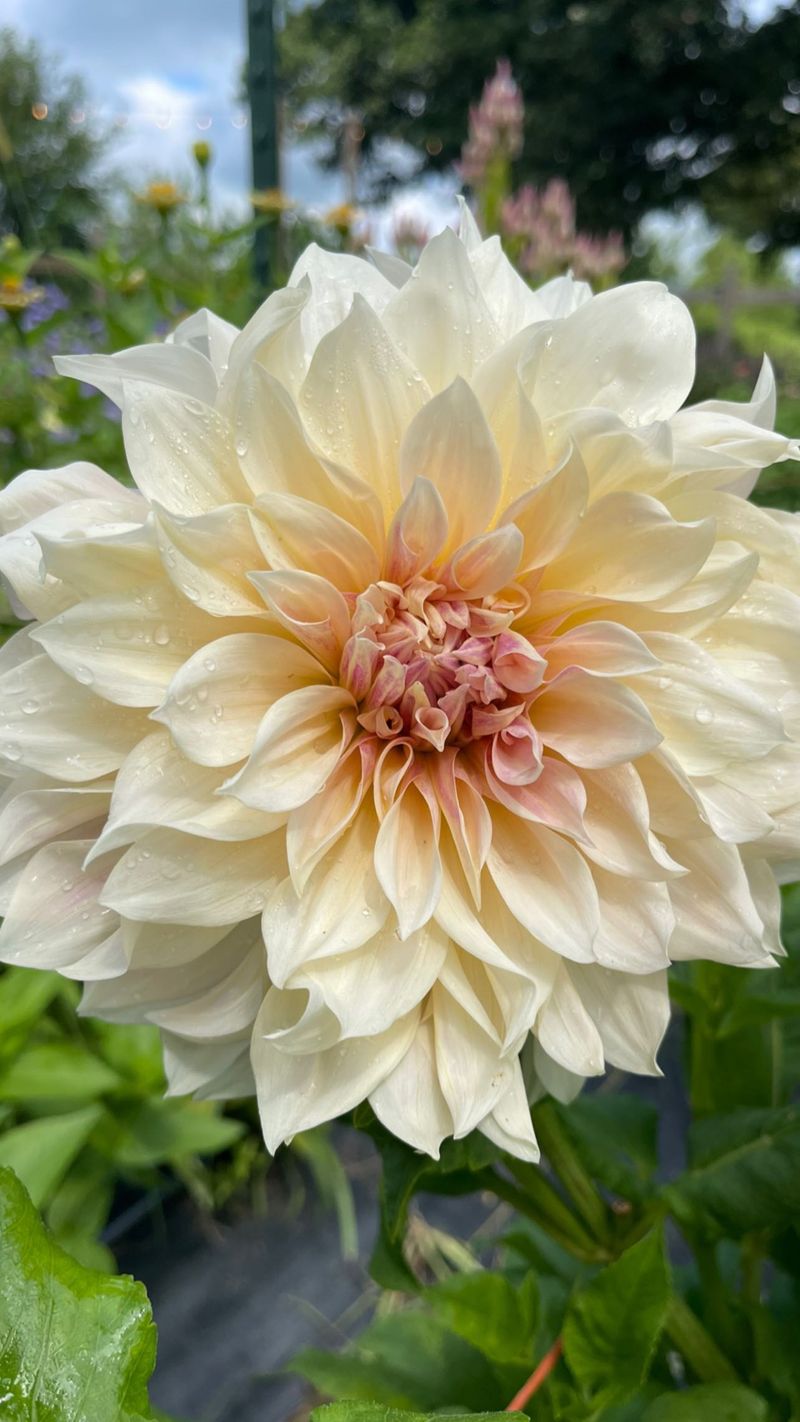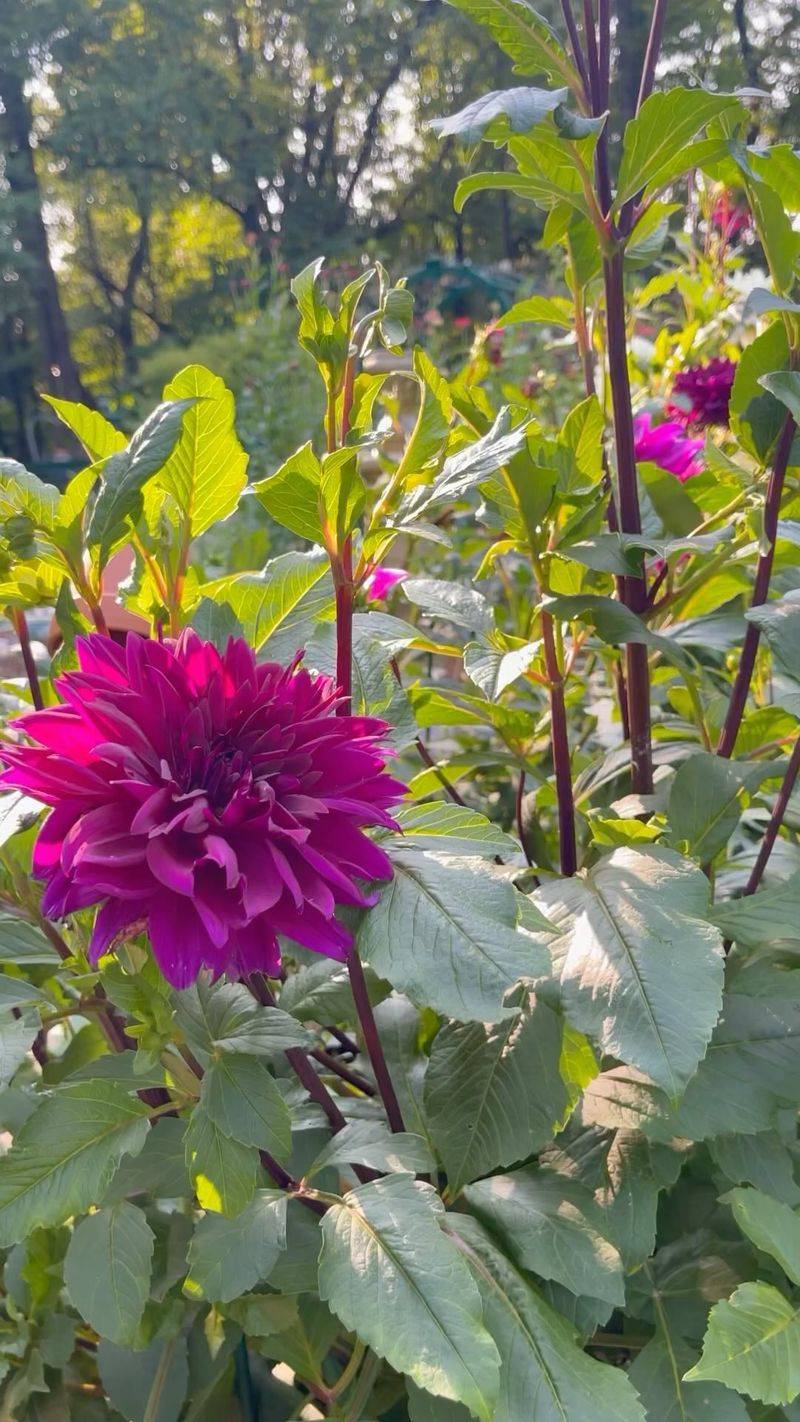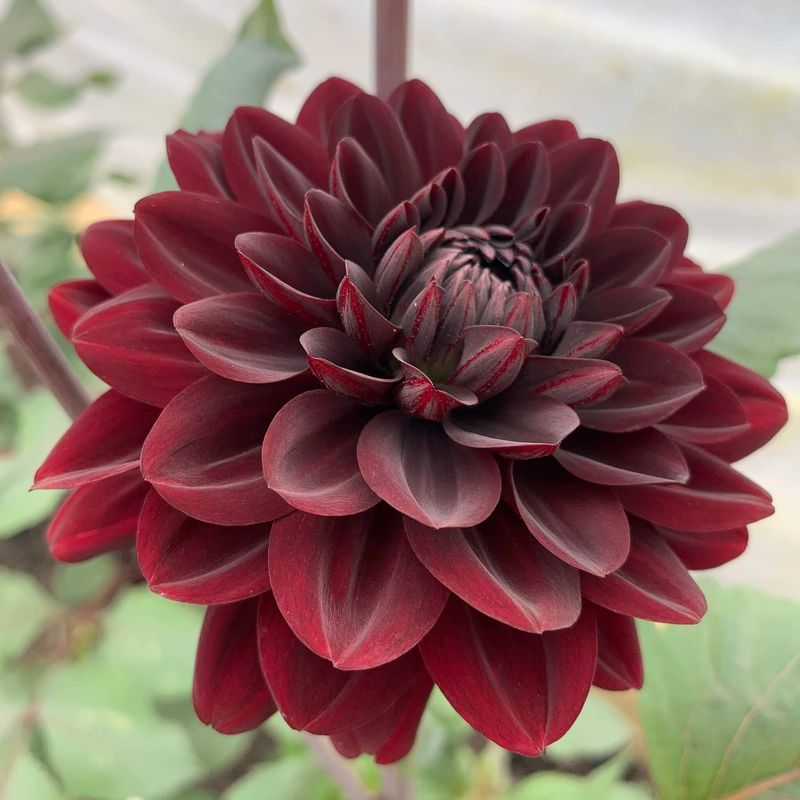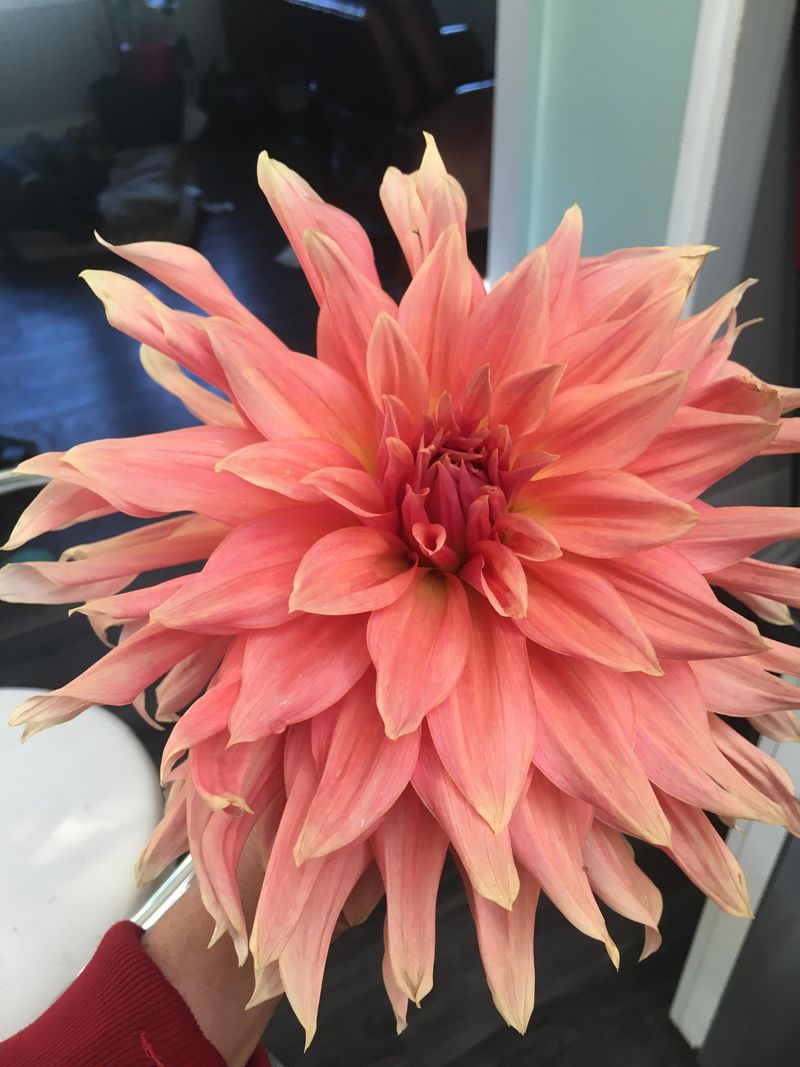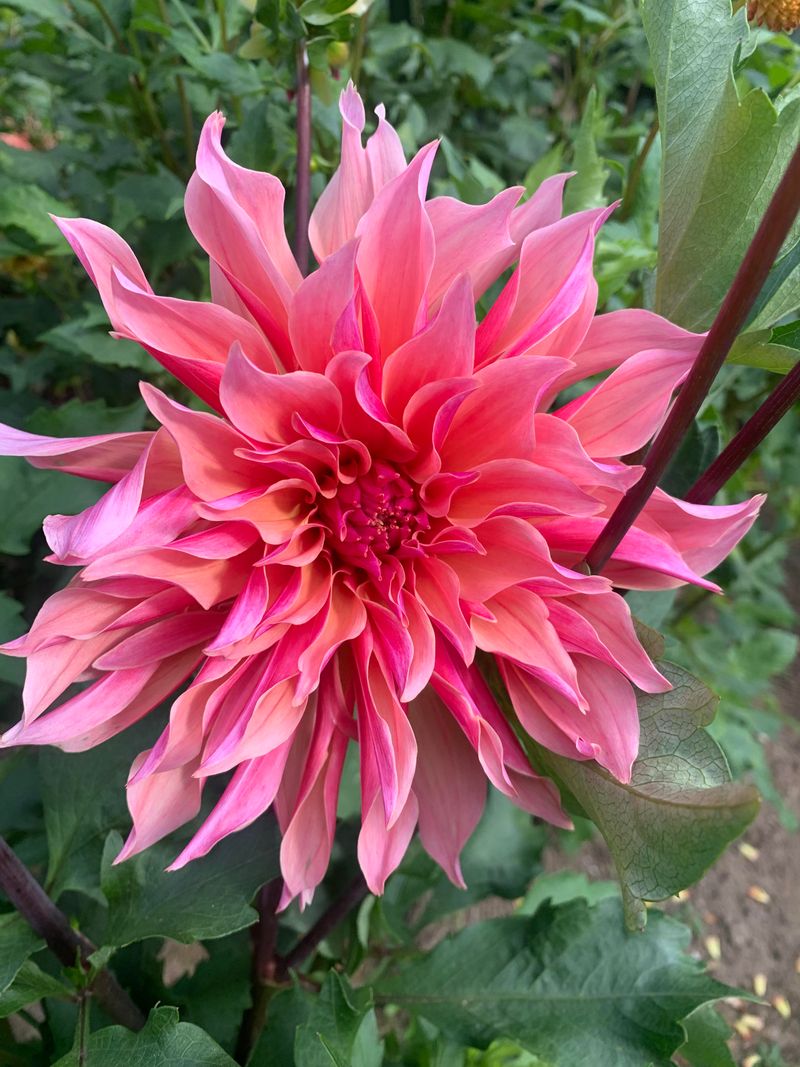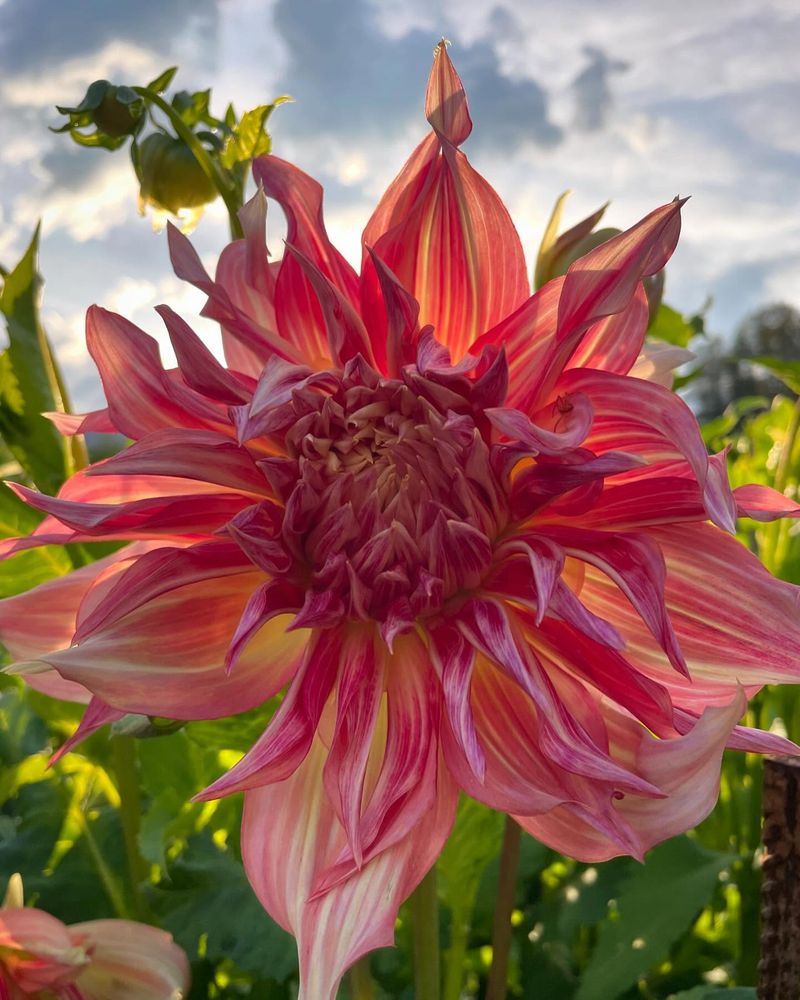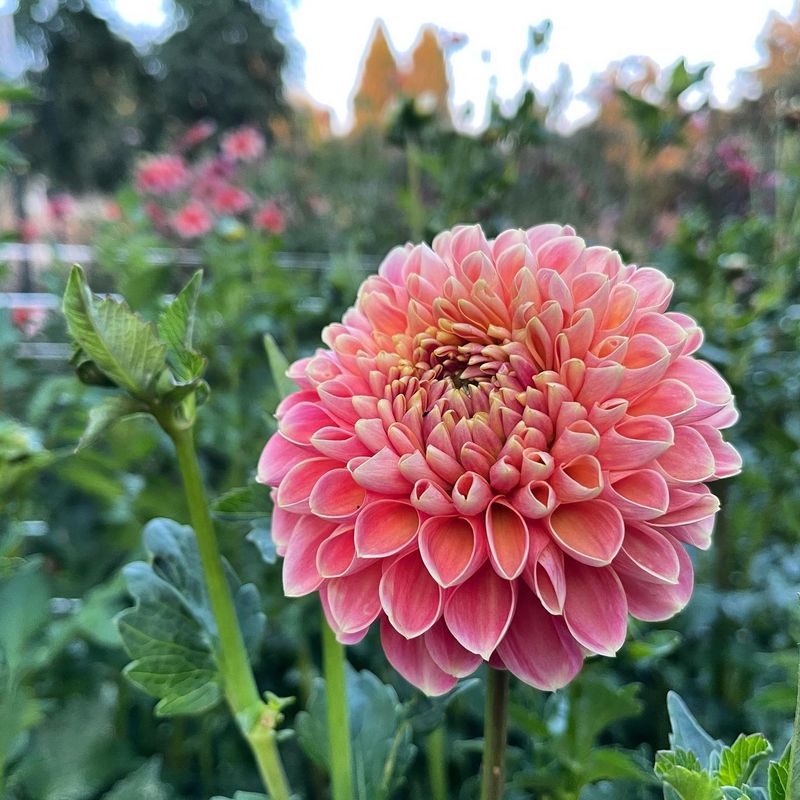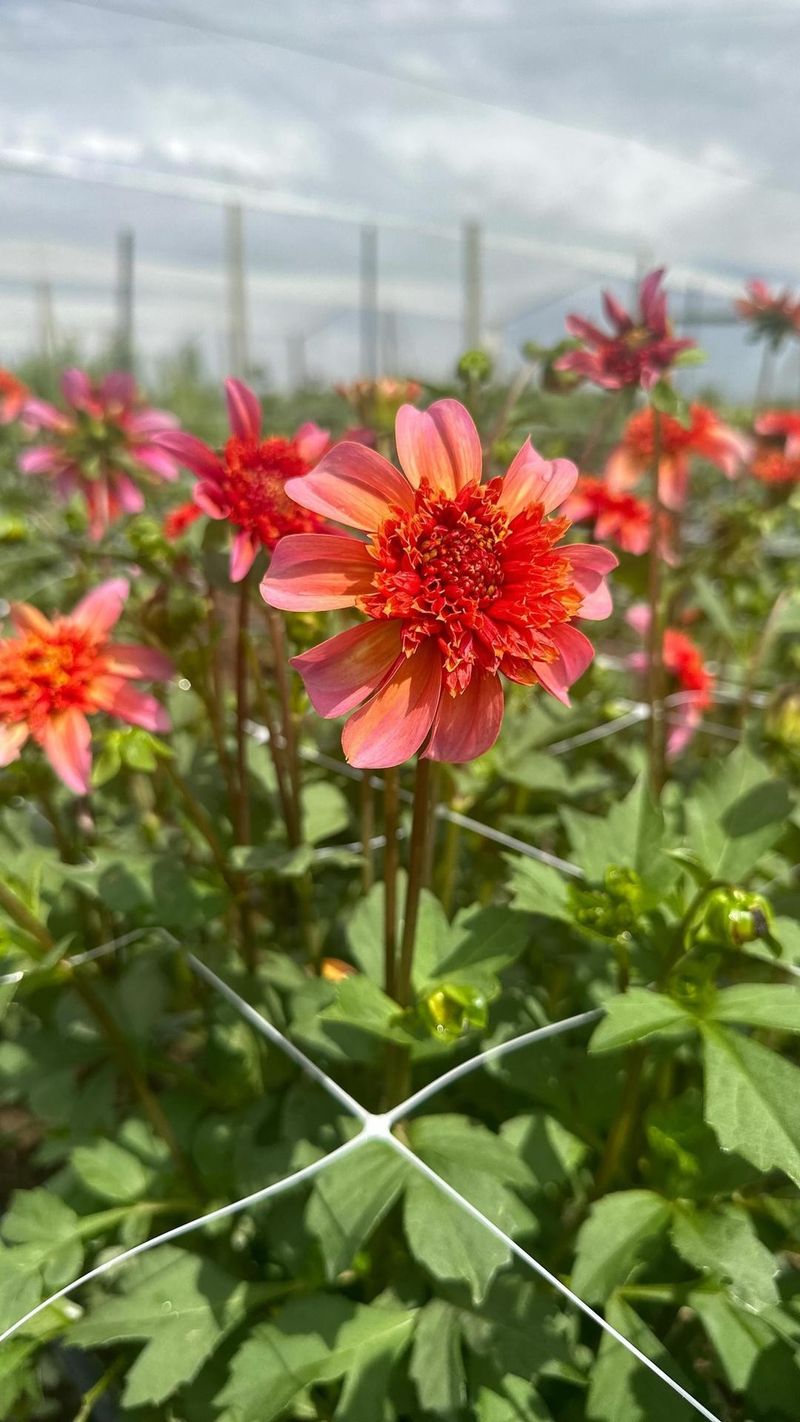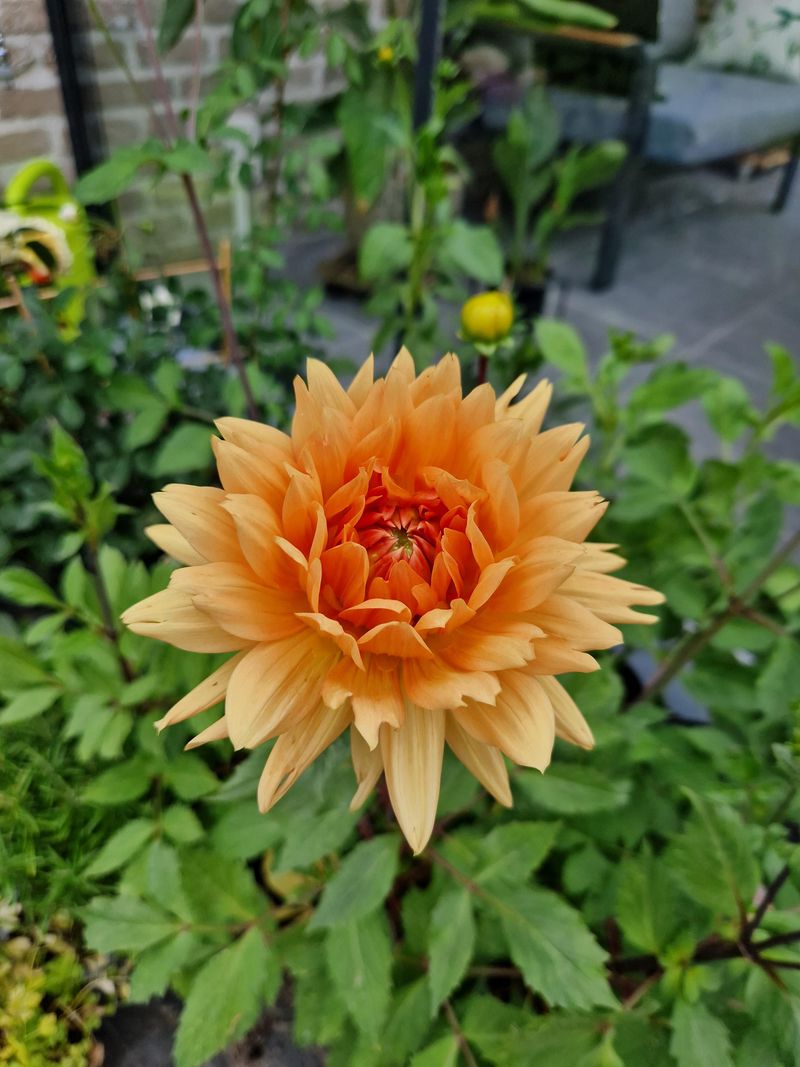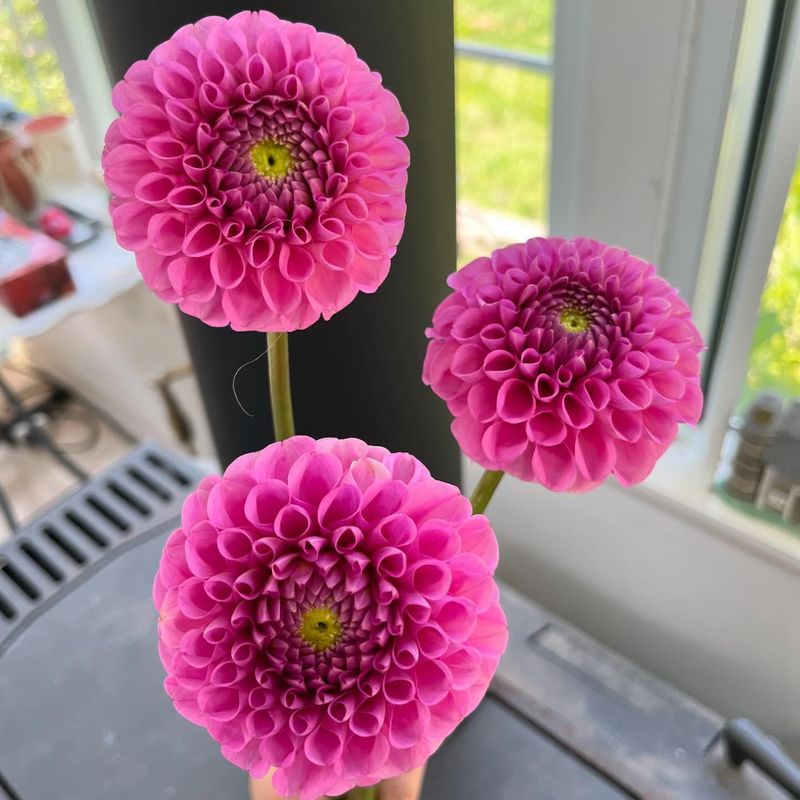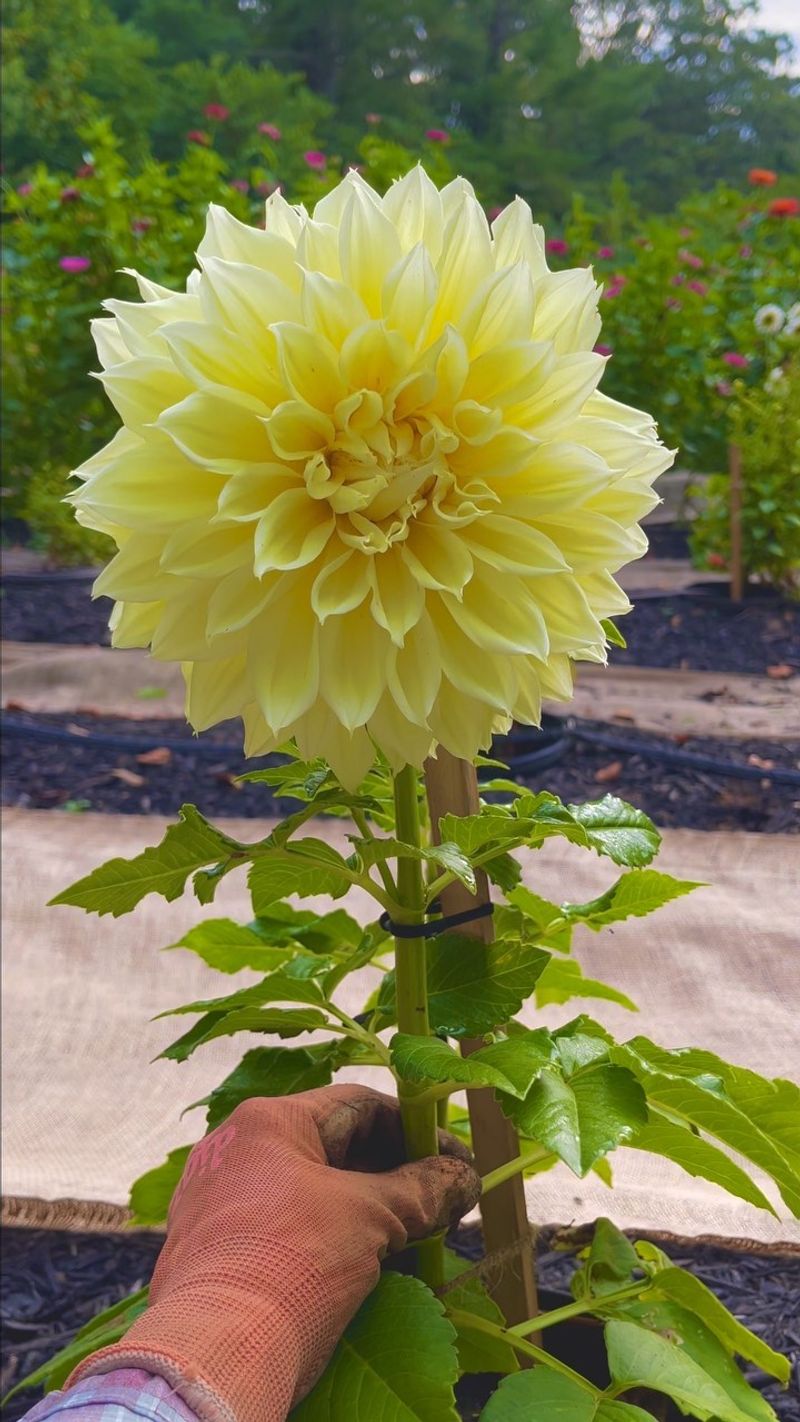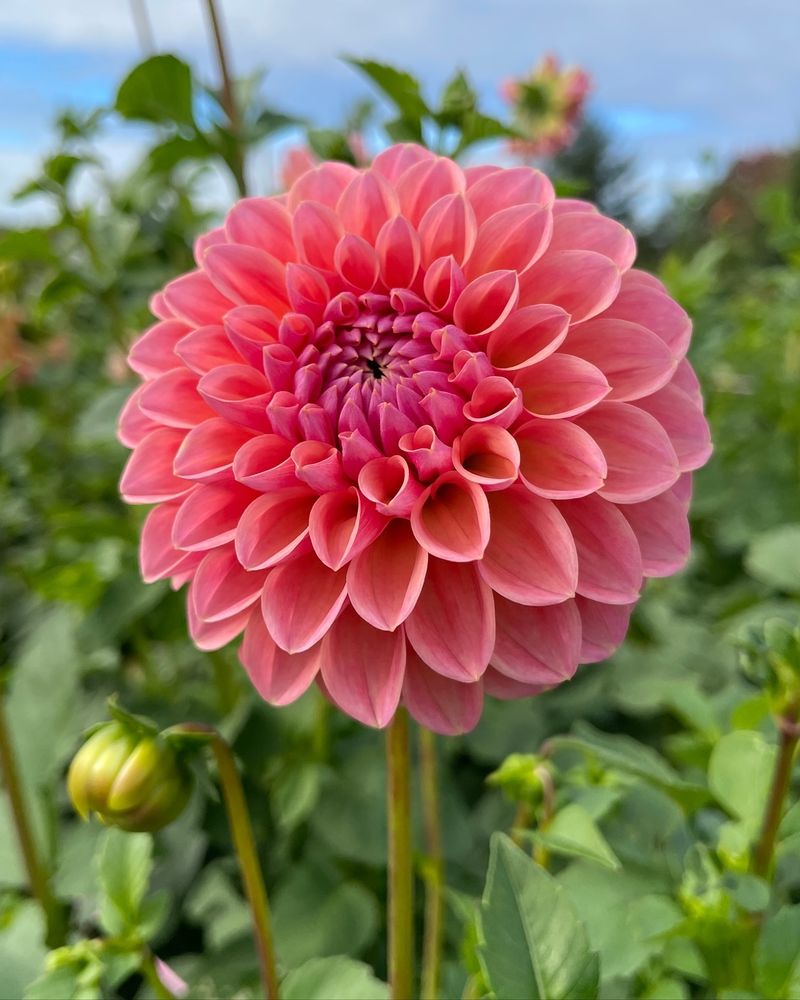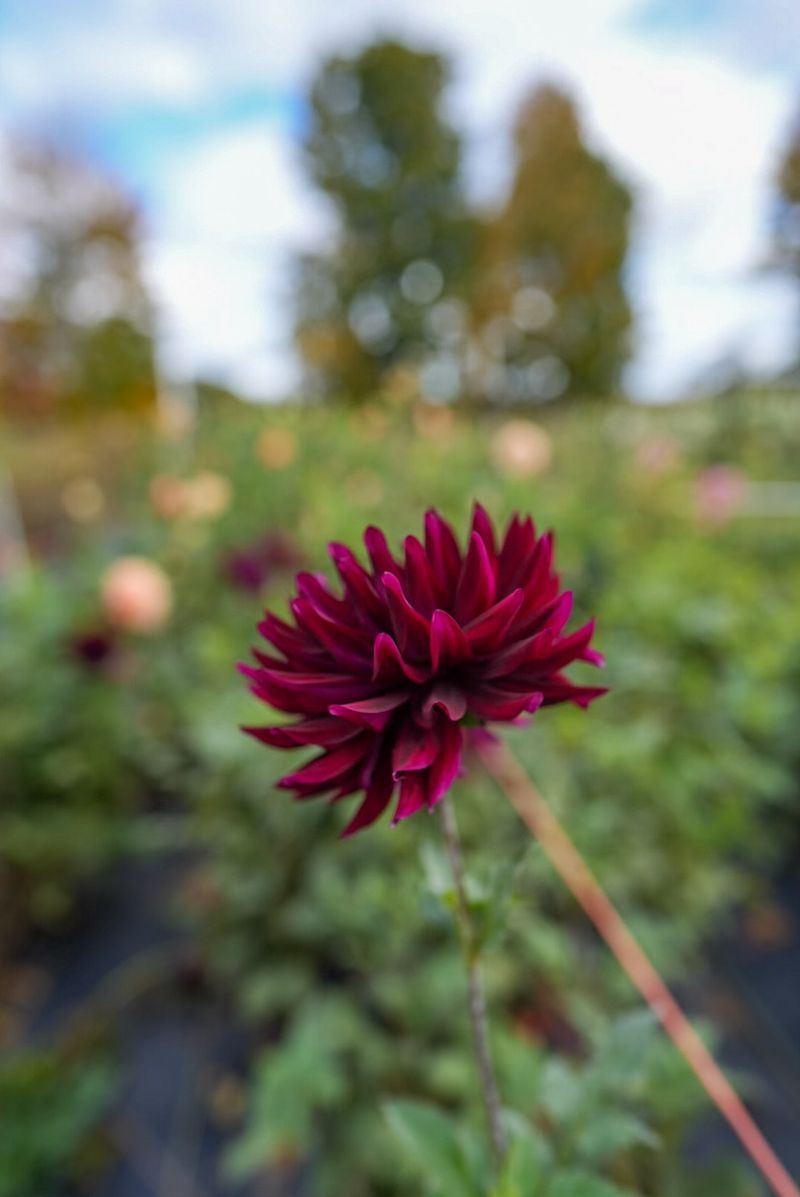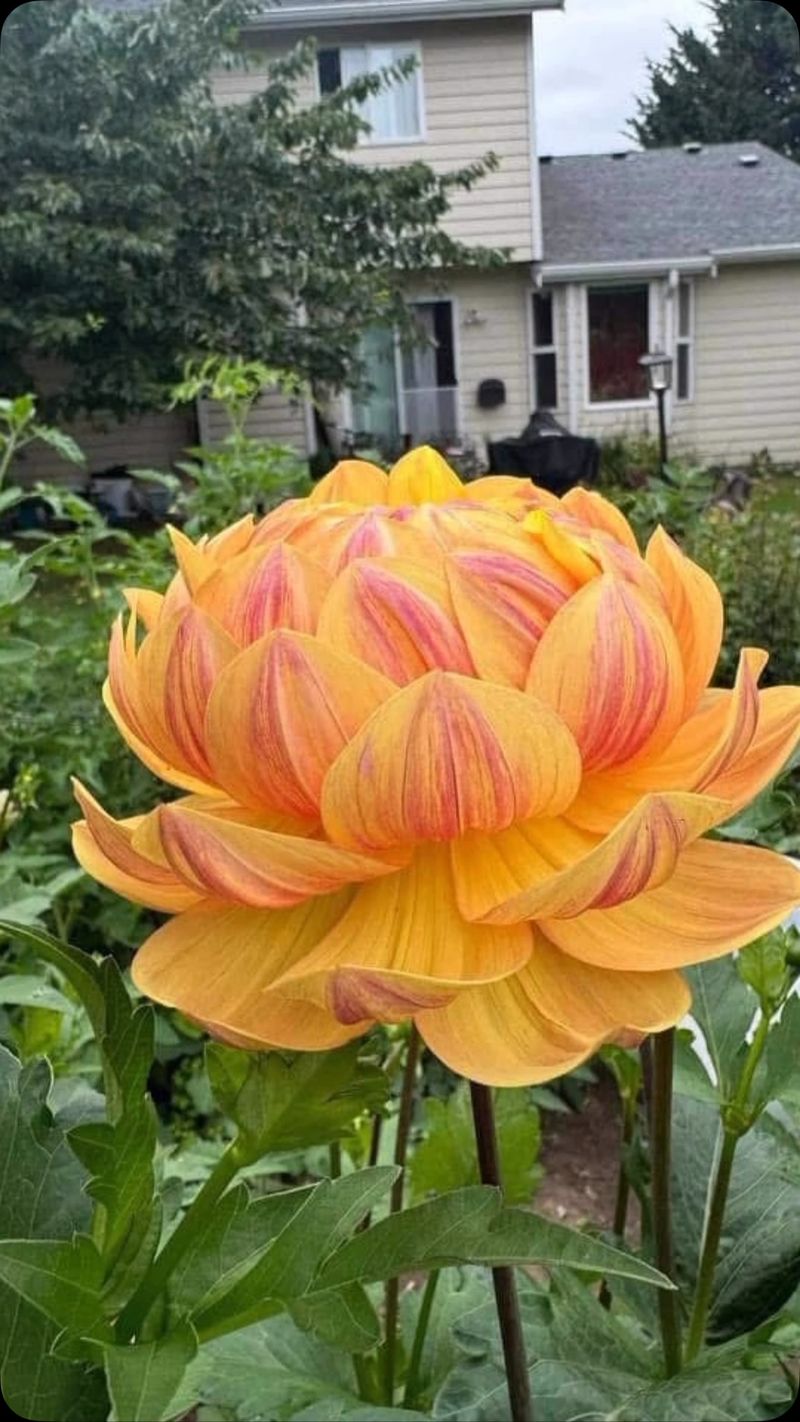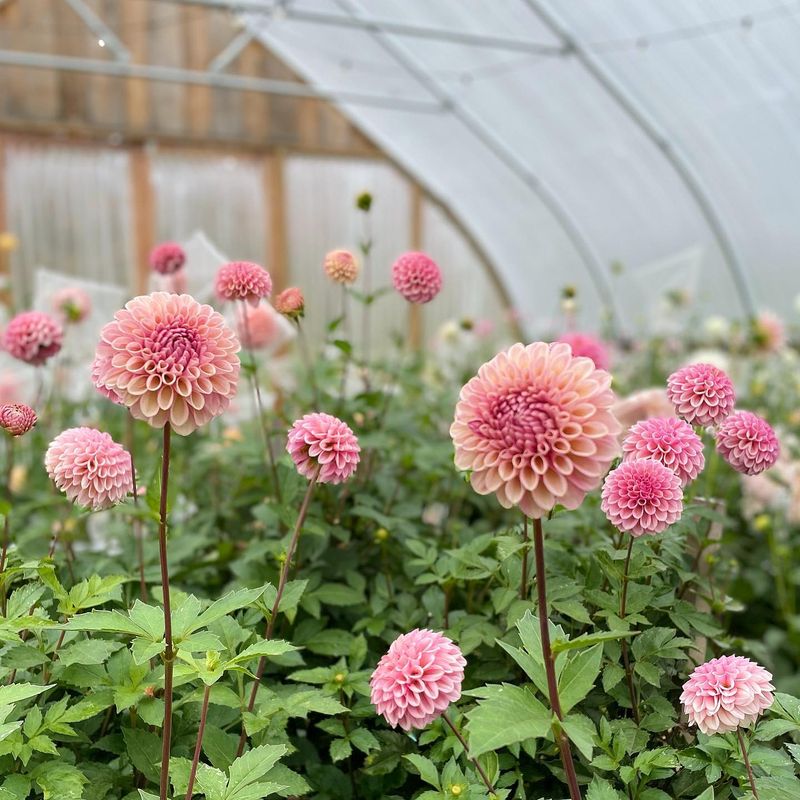Dahlias really are the crown jewels of summer gardens, bringing bursts of color and texture that last from midsummer all the way to the first frost. Their range is amazing—everything from tiny pompom shapes to huge, dinner-plate-sized blooms that steal the show.
Over time, I’ve gathered tips from pro gardeners who know dahlias inside and out. They’ve shared their personal favorites, the varieties that keep coming back strong and look stunning in home gardens.
If you want reliable dahlias that deliver both beauty and ease, these tried-and-true picks are the ones to try. They’ll help your garden shine all summer long without the fuss.
1. Café Au Lait
The soft blush tones of this dinner-plate dahlia have made it a garden legend and wedding flower favorite. Growing to 4-5 feet tall, it produces blooms up to 10 inches across with petals that shift from cream to pale pink as they mature.
I’ve found it needs good staking from the start – those massive blooms become heavy, especially after rain. My plants always attract compliments from neighbors who stop to ask what they’re seeing.
Unlike fussier dahlias, this one forgives some neglect but rewards consistent watering with more abundant flowering. Pair it with ornamental grasses for a dreamy contrast of textures in your garden beds.
2. Bishop Of Llandaff
Dark bronze-purple foliage makes this dahlia stand out even before its scarlet flowers appear. The semi-double blooms aren’t the largest at just 3-4 inches across, but they rise above the foliage on strong stems from July through October.
What makes it special is how wildlife-friendly it becomes – bees absolutely cover the open-centered flowers. I’ve grown this variety for eight years now, and it’s survived winters when others failed.
Many gardeners I know consider this their gateway dahlia – the one that started their collection. It works wonderfully in cottage gardens or containers and doesn’t need the staking that taller varieties require.
3. Thomas Edison
Named after the famous inventor, this dahlia produces formal decorative blooms in a deep purple that appears almost electric blue in certain light. The flowers measure about 6-8 inches across on plants that reach 3-4 feet tall.
My garden club friends consider it one of the most reliable performers in hot summers. It holds its color without fading, unlike many purple varieties that wash out in strong sunlight.
The stems grow thick and sturdy, making it excellent for cutting gardens. Plant it where afternoon shade will protect the rich color, and deadhead regularly to keep the blooms coming until fall frost ends the show.
4. Karma Choc
The darkest dahlia I’ve ever grown, with blooms so deeply burgundy they appear almost black in evening light. Medium-sized flowers reach about 5 inches across with perfectly formed petals arranged in a water lily pattern.
What surprises most gardeners is how the dark color doesn’t absorb heat and wilt like you might expect. The plants grow to about 3 feet tall with straight stems that rarely need staking.
I’ve found this variety particularly resistant to powdery mildew, which can plague dahlias in humid climates. The dramatic color creates stunning contrast when planted near pale yellow or white flowers in the border.
5. Belle Of Barmera
Salmon-pink petals with golden centers create a sunset effect on these 6-inch blooms. The informal decorative flowers have slightly curved petals that give them a relaxed, windswept appearance even on still days.
Growing to about 4 feet tall, this Australian-bred variety handles heat better than most. Last summer, when temperatures hit 95°F for weeks, it kept flowering while others took a break. The stems branch naturally, producing more flowers than single-stemmed types.
I’ve grown it in half-day sun with excellent results, though full sun increases bloom count. For the longest vase life, cut these in early morning when the dew has just dried.
6. Labyrinth
Spiral patterns form as the incurved petals of this cactus dahlia unfold, creating a mesmerizing, almost optical illusion effect. The lavender-pink blooms measure about 6 inches across on plants that reach 3-4 feet tall.
Unlike many cactus types with floppy stems, Labyrinth holds its flowers upright without excessive staking. The spiky form creates interesting textural contrast against broader-leaved plants in mixed borders.
My neighbor grows these in large containers on her patio where she can appreciate the intricate petal arrangement up close. The cut flowers last over a week in vases, continuing to unfurl their complex pattern even after cutting.
7. American Dawn
Color-changing blooms start as apricot and mature to pink with yellow centers, giving the appearance of multiple flower colors on a single plant. The informal decorative flowers reach 4-5 inches across on 3-foot plants.
Hardy and disease-resistant, this variety often survives in zones where other dahlias perish over winter. I’ve left tubers in the ground with a thick mulch cover in zone 7, and they’ve returned reliably for three years.
The stems have a slight zigzag growth pattern that adds character to flower arrangements. For garden planting, this moderate-sized variety works well in middle positions of borders where taller plants won’t overshadow its subtle color transitions.
8. Penhill Watermelon
Massive dinner plate blooms in a true watermelon pink make this giant dahlia an instant focal point. The flowers can reach an astonishing 10-12 inches across on plants that grow 4-5 feet tall. Despite their size, the blooms aren’t as heavy as they look, allowing stems to support them without excessive flopping.
The plant produces fewer flowers than smaller varieties but compensates with their jaw-dropping scale. Several garden designers I know use these as specimen plants, allowing one or two to command attention rather than massing them.
Plant the tubers slightly deeper than usual (about 6 inches) to help anchor these giants against wind.
9. Crichton Honey
Warm amber-gold petals on this ball dahlia create a glowing effect in evening light. The perfectly round, 3-inch blooms appear in abundance on compact plants that rarely exceed 3 feet in height. Ball dahlias like this one hold up exceptionally well in rainy conditions when other types turn to mush.
The dense petal arrangement repels water, keeping the flowers looking fresh even after summer storms. My friend who grows cut flowers commercially says this variety produces more stems per plant than any other in her field.
For home gardeners, it’s ideal for containers or front-of-border positions where its prolific flowering can be appreciated up close.
10. Totally Tangerine
Clear orange semi-cactus blooms with pointed petals bring a burst of citrus color to the summer garden. The medium-sized 4-5 inch flowers appear in abundance on plants that reach about 3-4 feet tall.
Orange flowers can sometimes clash in garden settings, but this particular shade harmonizes beautifully with purples and blues. I’ve paired it with salvias and lavender for striking color combinations that last for months.
Unlike some dahlias that slow down in heat, this one seems to flourish when temperatures climb. The stems grow straight and strong, making it an excellent cutting variety that arranges easily without florist wire support.
11. Noordwijks Glorie
Unusual coloration makes this Dutch-bred dahlia stand out – copper-orange petals are brushed with purple-red tips as if hand-painted. The decorative blooms measure about 5 inches across on plants reaching 3 feet tall.
The name translates to “Glory of Noordwijk,” and it lives up to this prestigious title with exceptional stem strength. Even heavy rain rarely knocks over these sturdy plants. Several professional gardeners mentioned this as their secret weapon for extending the dahlia season.
It starts blooming earlier than most varieties and continues reliably until hard frost, often producing flowers well into October in milder climates.
12. Jowey Winnie
Petite pompon flowers in soft lavender pink grow no larger than 2 inches across, arranged in perfect globes. These diminutive blooms appear by the dozens on compact plants that stay under 3 feet tall. Small-flowered dahlias often outperform their larger cousins for sheer quantity of blooms.
One established plant can produce over 100 flowers in a single season when deadheaded regularly. The tight formation of petals makes these particularly long-lasting as cut flowers.
I’ve had vases remain perfect for over 10 days. For garden impact, plant them in groups of three or five rather than singly to create more visual mass with these smaller blooms.
13. Kelvin Floodlight
Lemon-yellow dinner plate blooms can reach a massive 10 inches across on this garden giant. The decorative flowers maintain their clear yellow color throughout the bloom cycle without fading, even in strong sunlight. Growing to 4 feet tall, this variety needs sturdy support from the beginning.
I install tomato cages at planting time, allowing the stems to grow through them for invisible support. Despite its size, this dahlia doesn’t demand excessive feeding.
Too much nitrogen actually reduces flowering, so I use a low-nitrogen, high-potassium fertilizer once monthly. The large blooms make spectacular single-stem arrangements when you need maximum impact with minimal effort.
14. Linda’s Baby
Peachy-apricot ball dahlias with perfectly symmetrical petal arrangements grow to about 3 inches across. The plants remain compact at just 2-3 feet tall, making them suitable for smaller gardens or front-of-border positions.
Ball dahlias excel as cut flowers, and this variety’s sturdy stems and long vase life make it particularly valuable. The blooms develop slowly, allowing you to enjoy each stage from tight bud to full flower.
A professional florist I know grows these specifically for wedding work, as the soft color complements nearly any palette. In the garden, they benefit from afternoon shade in hotter climates, which preserves the delicate color from bleaching in intense sun.
15. Spartacus
Deep crimson-red formal decorative blooms with nearly black centers create dramatic impact in the garden. The flowers grow to about 8 inches across on plants that reach 4 feet in height.
Unlike some red flowers that can appear flat in photographs, these have such depth of color that they photograph beautifully. The dark foliage complements the rich flower color, creating a cohesive look.
Many red dahlias struggle in extreme heat, but this variety maintains its flowering even during hot spells. For best performance, mulch heavily around the base to keep roots cool and provide consistent moisture without waterlogging.
16. Crazy Love
Bicolor waterlily-type blooms combine yellow centers with raspberry-pink petal edges, creating a gradient effect that changes as the flower ages. Medium-sized 4-inch flowers appear in abundance on 3-foot plants.
The petals have a distinctive rolled form at the tips, giving each bloom a slightly windblown, casual appearance. This relaxed form works particularly well in cottage garden settings or naturalistic plantings. I’ve found this variety to be exceptionally drought-tolerant once established.
During water restrictions last summer, it continued flowering with just weekly deep watering when other varieties sulked. Plant it where it will receive morning sun but some afternoon protection.
17. Bracken Rose
Old-fashioned single dahlias have gained renewed popularity, and this one shows why with its simple form – a single row of rose-pink petals surrounding a golden center. The 3-inch blooms appear in profusion on bushy plants that grow 2-3 feet tall.
Single dahlias are pollinator magnets, attracting bees, butterflies and beneficial insects that help your entire garden thrive. The open-centered flowers allow easy access to pollen and nectar.
For a naturalistic planting scheme, these integrate beautifully with perennials, unlike some of the more formal dahlia types that can look out of place in casual settings. They’re also among the earliest to bloom, often starting in June when other varieties are still developing.

